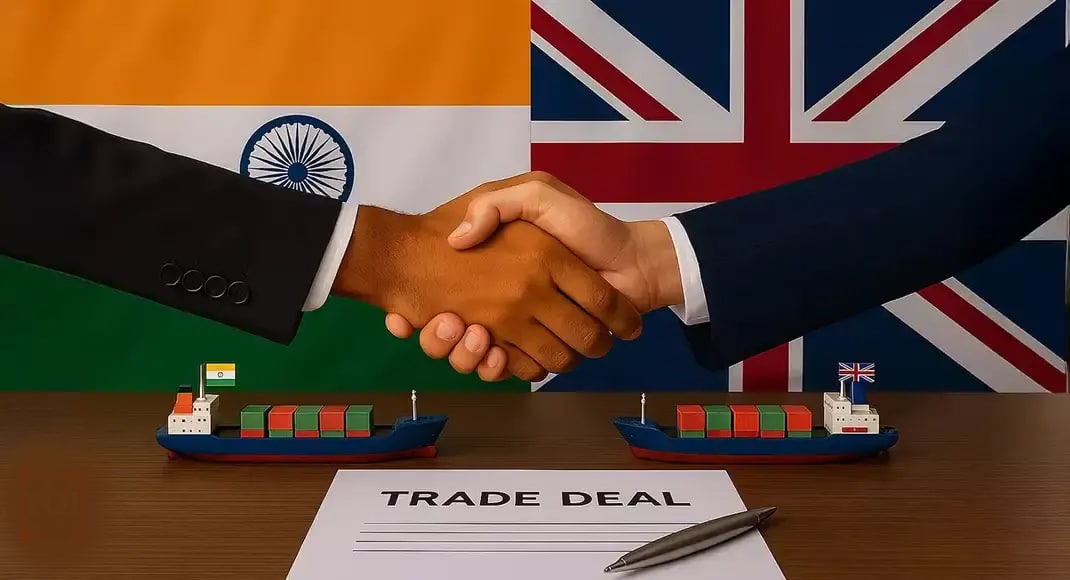India and US Accelerate Efforts to Finalize Trade Agreement Before Deadline

The United States and India are nearing the completion of negotiations for a significant trade deal, with a deadline set for July. This agreement, often referred to as a “mini-deal,” could reshape the economic ties between the two nations. As discussions unfold in Washington, both countries are eager to finalize terms that could avert potential tariff increases and enhance trade relations.
Details of the Trade Agreement
The anticipated trade deal between the US and India is expected to be a limited arrangement, similar to the recent US-UK trade agreement. According to the Global Trade and Research Initiative (GTRI), India may need to reduce its Most Favoured Nation (MFN) tariffs on various industrial goods, particularly automobiles, which have been a consistent demand from the US. In terms of agricultural trade, India is likely to offer limited access for American products such as ethanol, almonds, apples, avocados, wine, and spirits, through modest duty reductions and tariff-rate quotas. However, India is keen to protect its vital sectors, including dairy, rice, and wheat, which are essential for food security and rural livelihoods.
The deal may also encompass strategic agreements for the procurement of American oil, liquefied natural gas (LNG), commercial aircraft, and nuclear power equipment. Additionally, India might be required to ease regulations on multi-brand retail and the importation of remanufactured goods, potentially opening doors for international retail companies. In return, the US is expected to maintain a 10% baseline tariff on most Indian exports, avoiding the previously proposed increase to 26%. However, the US’s stance on retaining its MFN tariffs on Indian goods raises concerns about fair treatment and mutual benefits.
Challenges in Negotiations
Despite the progress, significant hurdles remain in the negotiations. The US’s insistence on gaining extensive access to India’s agricultural sector and its push for the inclusion of genetically modified organisms (GMO) products could jeopardize the talks. India has firmly stated that these demands threaten food security and impact the livelihoods of over 700 million people involved in its agricultural economy. While agricultural products account for a small fraction of US exports to India, the US administration continues to advocate for increased market access.
Experts in India express concerns that any concessions made could lead to further demands that might undermine the country’s established public procurement framework and the minimum support price (MSP) mechanism, both crucial to its agricultural policies. If negotiations falter, uncertainty looms over whether President Trump would reinstate the previous 26% tariffs. However, trade specialists believe this scenario is unlikely, as India was not a primary target in the initial tariff directive. Nevertheless, given Trump’s unpredictable policy decisions, all outcomes remain possible.
Future Implications of the Trade Deal
Regardless of the outcome, trade authorities emphasize the importance of India maintaining its stance and pursuing an agreement that ensures mutual benefits and clarity. GTRI has highlighted that any trade deal with the US should not be politically motivated or one-sided; it must safeguard India’s farmers, digital ecosystem, and regulatory autonomy. President Trump has indicated that a significant trade agreement with India is forthcoming, stating, “We’re having some great deals. We have one coming up, maybe with India. Very big one.” As negotiations continue, the focus remains on achieving a balanced agreement that addresses the interests of both nations while fostering a stronger economic partnership.
Observer Voice is the one stop site for National, International news, Sports, Editor’s Choice, Art/culture contents, Quotes and much more. We also cover historical contents. Historical contents includes World History, Indian History, and what happened today. The website also covers Entertainment across the India and World.

